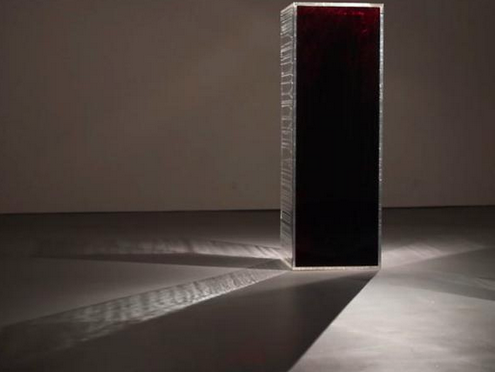The Politics of Blood: HIV Criminalization in the Modern Era

On July 13th, Michael Johnson, a 23-year-old gay black man from Missouri was convicted of 5 felony counts and sentenced to at least 30 years in prison for transmitting HIV to one person and exposing it to four others. Johnson’s case is the latest instance of HIV criminalization, in which those convicted receive disproportionate sentencing based on an outdated, homophobic, racially charged, and unscientific understandings of the disease.
To give context to Johnson’s sentence, the college wrestler was convicted of a Class A felony in Missouri, which carries a sentencing range of 10-30 years or life imprisonment. The charge is on par with first-degree murder and forcible rape of a child under 12 years old.
Many laws related to HIV criminalization and disclosure originated from the late 80’s and early 90’s - a time when little was known about the virus and fear was rampant. Thirty years later, many of these myths have been debunked and medical science has advanced to make HIV a highly manageable disease. Treatment allows individuals to live with viral loads that are undetectable in the blood stream; this means that the copies of HIV in a milliliter of body fluid are below what testing equipment is able to detect. While this does not eliminate the virus, it significantly reduces the risk of transmission - in some cases by nearly 96 percent, according to HIV experts. Additionally, the emergence of prescription drugs like PrEP (pre-exposure prophylaxis) have the ability to reduce the risk of infection by nearly 92%. Those who do contract HIV despite these countermeasures can readily receive treatment and live healthy, normal lives.
Despite these advances, Johnson’s lengthy sentence is indicative of the lack of HIV awareness in government and the law. According to the Center for Disease Control and Prevention (CDC), 33 states have laws criminalizing lack of disclosure or other behaviors of HIV-positive individuals. In fact, 24 states have enacted laws that “criminalize behaviors that present low or negligible risk for transmission,” suggesting that these laws are less about protecting the public from legitimate health threats and more about stigmatizing those who are HIV-positive.
The stigma against HIV has caused many HIV-positive people to be unjustly jailed. A Texas man was found guilty in 2008 of aggravated assault with a deadly weapon for spitting on a police officer. Daniel Allen of Michigan was charged with possession of a biological weapon after biting his neighbor. In 2008, Nick Roades was convicted of exposing a man he had sex with to HIV even though he wore a condom. The punishment was 25 years in prison, as well as sex offender registration upon release.
Despite scientific evidence which says that the risk of transmission is extremely low when on medication and even less when wearing a condom, having sex while HIV-positive is still a punishable offense. This perpetuates stigma surrounding the virus and misconstrues people who live with it as “deadly weapons” and “dangers to society.”
Misconceptions about HIV that originated in the ignorance of the 80’s are still incredibly prevalent today. They include: ways that HIV is transmitted, the belief that it is a death sentence, a sense of sexual deviancy or promiscuity attributed to those testing positive, and its association with “immoral” activities like sex work, drug use or homosexuality.
In an interview with Neon Tommy, Craig Pulsipher from the AIDS Project Los Angeles said that “one of the biggest day-to-day challenges for people living with HIV is [with] disclosure – who to disclose to, how/if to disclose, and when. Given the lack of understanding about HIV among the general public and even within the [LGBTQ+] community, disclosing one’s HIV status can be met [with] personal humiliation, rejection, and even violence.” Jonathan Van Nuys, a nurse practitioner working in HIV primary care, said that he “was looked at like a disease” when discussing his experience with disclosing his HIV status in an interview with Salon.
HIV stigma doesn’t just have moral consequences - it also has tangible public health ones. According to the World Health Organization, the negative image surrounding HIV is one of the leading factors that causes individuals to not disclose their status, get tested, or to get treatment. Without these tools, it is particularly hard to combat the spread of HIV and effectively respond to it.
It is also particularly important to recognize the way this stigma surrounds and disproportionately affects members of the LGBTQ+ community, queer people of color, and sex workers. A recent study conducted by the HIV Law and Policy Center shows that “the sentences of black individuals arrested for HIV exposure were significantly more severe than the sentences of their white counterparts.”
Michael Johnson is a gay black man who has been forced to spend 30 years in prison. The jury that found him guilty was made up of 11 white people and one black person. Four of Johnson’s accusers were white. During the selection process, potential jurors were asked if they thought homosexuality was a sin. Only 13 out of the 52 believed that it wasn’t, and many of those that did were seated on the final jury panel. Since Johnson couldn’t afford bail, he stayed in jail throughout the legal proceedings - but in solitary confinement, for four months without justification or explanation. The Texas man sentenced to 35 years in prison for spitting on a police officer was black and homeless. Daniel Allen, the man charged as a bioterrorist was also black. Nick Roades, sentenced to 25 years for having protected sex while HIV-positive, was gay.
Their experiences are not mere coincidences. HIV laws have become a tool to police the behavior and sexual practices of minority, non-heterosexual people. Is it possible to ignore Michael Johnson being called “Tiger Mandingo” and the dominant media narrative that depicted him as a monster, the black aggressor that viciously infected innocent white men? HIV stigma is just one of the many ways in which the law pathologizes queer people of color and sex workers, deeming them threats to society. That, coupled with the disproportionate sentencing that occurs, all but ensures that these individuals are incarcerated and dehumanized.

One artist by the name of Jordan Eagles is protesting one specific kind of HIV criminalization - the FDA ban on gay men donating blood. This policy is a quintessential example of a law based on outdated and unscientific myths. Before May 2015, the ban stated that any man who has had sex with another man at any time in his life is not allowed to donate blood. In response to this, Eagles constructed the Blood Mirror, in which he used the blood of nine gay men to create a sculpture that allows the viewer to “see [his] reflection through the blood of [his] brothers.” The premise of the sculpture, according to Eagles, is that “all the blood [here] could have been used for donations and wasn’t. It could have been used to save lives but it wasn’t.”
In fact, according to one California study, the increase in blood supply that would come from lifting the ban could help save nearly 1.8 million lives. The paradox of Eagles’ sculpture is that it “shouldn’t have been created in the first place,” because the ban should never have existed.
But the government still decides to indiscriminately conflate being a gay man with having HIV. In addition to the sculpture itself, Eagles’ work combats this generalization by documenting the intricate lived realities of those who are gay by using the blood of 9 very different people with different backgrounds. One donor to the project, Captain Anthony Rockwood, served two terms in Iraq and was discharged under “Don’t Ask, Don’t Tell.” In a documentary about the Blood Mirror by Leo Herrera, Captain Rockwood said, “the idea that I can shed my blood on the battlefield and yet at the same time cannot donate blood really doesn't make sense to me.”
Another donor, Ty Spicha, is gay but has an identical twin who is heterosexual. Ideally, if his brother ever needed blood, Spicha would be the perfect match. But due to the ban, he would not be able to help him. Their blood is identical, but only one is able to donate.
Blue Bayer, a bisexual father to two biological children, is in the same boat. If his children ever needed blood, he would be turned away.
The lifelong ban on donations may not be permanent. In mid-May, the FDA submitted a proposal to modify the requirement to allow donations from men who have not had sexual contact with other men for at least 12 months. While marginally better than the lifelong ban, Eagles’ says that the new policy “still adds insult to injury” by maintaining the core premises of the original policy intact.
“However, the largest insult isn’t directed towards gay men,” said Eagles. “The largest insult is directed towards all people. We have a government that doesn’t trust science. How are we supposed to cure HIV if we have a government that does not trust science? If they do not trust it, then they will not invest in it. If they did, they would not have come back with this 12 month requirement.”
“The FDA’s policy continues to classify all sexually active gay and bisexual men in the highest-risk blood donor category regardless of health history,” said Pulsipher. “A gay man with a clean bill of health and who consistently practices safer sex is considered more of a threat to the blood supply than a straight man who was recently treated for multiple sexually transmitted infections.”
The CDC also announced recently that all HIV-negative gay men should begin taking PrEP, the medication that significantly reduces the chances of contracting HIV.
“Wouldn’t a gay man on PrEP be the most opportune blood donor to protect the blood supply?” Eagles points out. “They aren’t even asking that question, they are screening in a way that is black and white.
HIV criminalization is not just an issue for those who test positive; it affects all members of the LGBTQ+ community. “Regardless if you want to give blood,” says Eagles, “this is something you should care about because it perpetuates stigma that is affecting our community, that is affecting you.”
Pulsipher gave some useful tips to combat HIV criminalization. The first is that people ought educate themselves and others about HIV transmission and prevention. “With advancements in science, it is now possible for serodiscordant couples (couples in which one person is HIV positive and the other person is HIV negative) to virtually eliminate the risk of HIV transmission,” he says. Additionally, people should involve themselves in efforts to reform laws targeting HIV-positive individuals.
De-institutionalizing taboos surrounding HIV is only the first, but one of the most important steps to make society more inclusive of those living with HIV and at-risk communities.
Learn more about the AIDS Project L.A. andJordan Eagles’ work with blood.
Reach Contributor John Vitzileos here.



